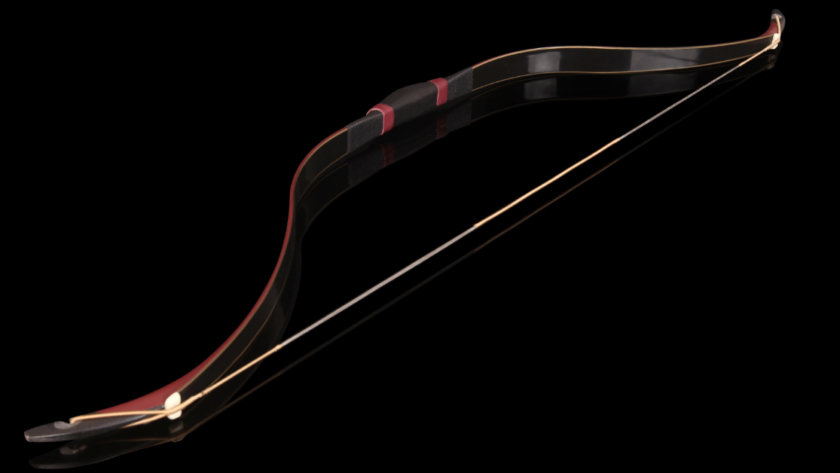As an archer with over two decades of experience crafting bowstrings, I’ve developed a deep appreciation for this essential component of archery. Creating your own bowstring connects you to the ancient art of archery in a profound way.
Let me share my tried-and-true method for making a high-performance bowstring that will elevate your shooting experience.
Understanding Bowstring Basics
A bowstring is a precisely engineered component that directly impacts your bow’s performance. The material, number of strands, and serving technique all play vital roles in determining the string’s strength, speed, and durability.
Modern materials like Dacron, Fast Flight, and BCY X have revolutionized bowstring performance, offering archers a range of options to suit their specific needs.
Achieving the correct length is critical in string making. A string that’s too long or too short can dramatically affect your bow’s brace height, influencing arrow speed and accuracy.
With practice, you’ll develop an intuitive feel for this delicate balance.
Gathering Your Tools and Materials
To create a top-notch bowstring, you’ll need:
- A string jig or two sturdy posts
- Your chosen string material (I prefer BCY X for it’s balance of strength and speed)
- Serving thread
- A serving tool
- Sharp scissors
- A lighter
- String wax
- Measuring tape
Investing in a quality serving tool will make the process much smoother and result in a more consistent serve.
The String-Making Process
1. Measuring and Setting Up
Measure your bow’s AMO length and subtract 4 inches for recurves or 3 inches for longbows. This gives you your starting string length.
Set up your jig to this length.
If you’re using posts, confirm they’re secure and won’t move during the process.
2. Laying Out the Strands
Begin laying out your strands. For a typical recurve bow, I use 14 strands of BCY X.
Wrap the material around the jig posts, keeping tension consistent.
This step is crucial for creating a balanced, high-performing string.
3. Creating End Loops
Once you’ve laid out all your strands, it’s time to create the end loops. For a Flemish twist string, separate the strands into three bundles and braid them for about 4-5 inches on each end.
For an endless loop string, simply wrap serving thread around all strands at each end to create loops of the desired size.
4. Applying the Center Serving
Determine the center of your string and use your serving tool to wrap serving thread tightly around this section. This protects the string from wear and provides a smooth nocking point for your arrows.
The center serving is crucial for consistent arrow release and overall string longevity.
5. Installing Nocking Points
Install nocking points above and below where the arrow will sit on the string. You can use brass nocking points or tied nocking points, depending on your preference.
Proper nocking point placement confirms consistent arrow flight and improved accuracy.
6. Waxing and Finishing
Finally, apply a thin layer of string wax and burnish it in with a piece of leather or serving thread. This helps protect the string and keep the strands together.
A well-waxed string will last longer and perform more consistently.
Overcoming Common Challenges
Achieving Consistent Tension
One of the biggest hurdles new string makers face is achieving consistent tension throughout the string. If some strands are tighter than others, it can lead to uneven wear and reduced performance.
To combat this, I use a method I call “strand walking.” As I lay out each strand, I run my fingers along it’s length, feeling for any tight or loose spots and adjusting as needed.
Preventing Serving Separation
Serving separation often occurs when the serving isn’t applied with enough tension. To prevent this, make sure you’re applying firm, even pressure as you wrap the serving thread.
It should be tight enough that you can barely twist it with your fingers.
A well-applied serving will protect your string and maintain it’s performance over time.
Adapting Your Technique
As you become more comfortable with string making, you can start experimenting with different materials and techniques to suit various bows and shooting styles. Compound bows typically need a higher strand count and may benefit from a blend of materials for optimal performance.
For traditional archers, exploring natural materials like linen or hemp can be rewarding, using historical techniques to create authentic strings for longbows or horse bows. Each material and bow type presents it’s own unique challenges and rewards, allowing you to continually refine your craft.
Advancing Your String-Making Skills
Mastering the basics of string making opens up a world of possibilities for fine-tuning your archery setup. You can experiment with different strand counts to find the perfect balance between speed and durability.
You might also explore advanced serving techniques, like monofilament center serving for a smoother release.
Understanding string dynamics and how they affect arrow flight can help you create strings that are optimized for peak performance. Concepts like string stretch, creep, and oscillation play significant roles in overall bow performance.
Practice Exercises
To hone your string-making skills, try these exercises:
- Make strings with different strand counts and test their performance on your bow.
Note the differences in speed, sound, and feel.
- Practice creating Flemish twist strings, focusing on achieving a tight, even braid.
This traditional technique needs patience and precision but can result in beautiful, high-performing strings.
- Experiment with different serving materials and techniques, comparing their durability and performance over time.
This will help you find the optimal combination for your shooting style.
- Try making strings for different types of bows, adapting your technique for each.
This versatility will make you a more well-rounded string maker.
Material Selection and Performance
Choosing the right material for your bowstring significantly impacts it’s performance. Here’s a breakdown of some popular options:
Dacron
Dacron is a polyester material known for it’s durability and stretch. It’s an excellent choice for beginners or for bows that can’t handle high-performance materials.
Dacron strings are forgiving and easy to work with, but they may not provide the speed of more advanced materials.
Fast Flight
Fast Flight is a high-performance material made from ultra-high-molecular-weight polyethylene. It offers minimal stretch and excellent durability, resulting in faster arrow speeds. However, not all bows are compatible with Fast Flight, so check your bow’s specifications before using this material.
BCY X
BCY X is a blend of Dyneema and Vectran fibers, offering a balance of speed, durability, and stability. It’s my personal favorite for most applications because of it’s consistent performance and ease of use.
BCY X strings typically need less maintenance than some other high-performance materials.
Natural Materials
For traditional archers, materials like linen, hemp, or silk can provide an authentic experience. These materials need different techniques and often more maintenance, but they offer a unique connection to archery’s historical roots.
String Dynamics and Bow Performance
Understanding how your string interacts with your bow can help you create better-performing strings. Here are some key concepts:
String Stretch
All strings stretch to some degree, but minimizing this stretch is crucial for consistent performance. Materials like Fast Flight and BCY X have very low stretch, which translates to more consistent arrow speeds and improved accuracy.
Creep
Creep refers to the gradual lengthening of a string over time. Minimizing creep confirms your bow maintains it’s brace height and performance characteristics.
High-quality materials and proper string construction techniques help reduce creep.
Oscillation
String oscillation occurs when the string vibrates after release. Minimizing oscillation can lead to quieter shots and potentially improved accuracy.
Factors like string material, strand count, and serving technique all influence oscillation.
Advanced Serving Techniques
As you progress in your string-making skills, you can explore more advanced serving techniques:
Monofilament Center Serving
Using a thin monofilament material for your center serving can result in a smoother release and potentially improved arrow speeds. This technique needs careful application to confirm durability.
End Serving Patterns
Experimenting with different end serving patterns can improve string durability and aesthetics. Some archers prefer a tapered end serving, while others opt for a uniform thickness.
Colored Servings
Incorporating colored servings can add a personal touch to your strings. This looks great but can also help with nocking point visibility.
String Maintenance and Care
Proper maintenance extends the life of your bowstring and confirms consistent performance:
Regular Waxing
Apply a thin layer of wax to your string regularly, especially in areas not covered by serving. This protects the fibers from moisture and abrasion.
Inspecting for Wear
Regularly inspect your string for signs of wear, particularly around the serving areas and nocking points. Catching issues early can prevent unexpected string failures.
Proper Storage
Store your bow in a cool, dry place when not in use. Avoid leaving it in hot cars or damp environments, which can degrade the string material.
Customizing Strings for Different Archery Disciplines
Different archery disciplines may benefit from specific string configurations:
Target Archery
Target archers often prefer strings with higher strand counts for stability and durability during high-volume shooting.
3D Archery
3D archers might opt for a balance between speed and stability, often using materials like BCY X with a moderate strand count.
Traditional Archery
Traditional archers may prefer Flemish twist strings made from natural materials, balancing historical authenticity with performance.
The Impact of String Weight on Arrow Speed
The weight of your string can significantly affect arrow speed. Generally, a lighter string will result in faster arrow speeds, but this must be balanced with durability and stability concerns. Experimenting with different materials and strand counts can help you find the optimal balance for your setup.
Fine-Tuning Nocking Point Placement
Proper nocking point placement is crucial for consistent arrow flight. While the standard starting point is about 1/8 to 1/4 inch above square, fine-tuning this position can greatly improve your accuracy.
Use bare shaft tuning or paper tuning techniques to find the optimal nocking point for your setup.
The Role of String Silencers
For hunters or archers concerned with noise, string silencers can be a valuable addition. Options include:
- Fur silencers
- Rubber whiskers
- Yarn puffs
Experiment with different types and placements to find the best balance between noise reduction and performance.
Creating Multi-Color Strings
For those interested in aesthetics as well as performance, creating multi-color strings can be a fun and rewarding process. By using different colored strands, you can create unique patterns that make your bow stand out.
This technique needs careful attention to strand tension to confirm even performance across all colors.
Adapting to Weather Conditions
Different weather conditions can affect string performance. In humid conditions, some materials may absorb moisture and stretch more.
In cold weather, strings can become stiffer.
Understanding these effects can help you choose the right materials and make necessary adjustments to maintain consistent performance across various conditions.
The Importance of String Twist
The number of twists in your string affects both it’s performance and longevity. Too few twists can lead to instability, while too many can reduce speed and increase wear.
A general rule of thumb is one twist per inch of string length, but this can be adjusted based on your specific setup and preferences.
Frequently Asked Questions
What is the best material for making a bowstring?
The best material depends on your bow type and shooting style. For many modern recurve and compound bows, materials like BCY X or Fast Flight offer excellent performance.
Traditional bows may benefit from Dacron or natural fibers.
How many strands should a bowstring have?
The ideal strand count varies based on bow type and draw weight. A typical recurve bow might use 12-16 strands, while a compound bow could use 20-24 strands.
Experimentation can help you find the optimal count for your setup.
How long does a homemade bowstring last?
With proper care, a well-made bowstring can last for thousands of shots. Regular inspection and maintenance can extend it’s life significantly.
Replace the string if you notice fraying, serving separation, or a significant change in brace height.
Can I make a bowstring without a jig?
While a jig makes the process easier and more consistent, it’s possible to make a string using two fixed points like nails in a board. However, investing in a proper jig will greatly improve your results and efficiency.
How do I determine the correct string length for my bow?
For recurve bows, subtract 4 inches from the AMO length. For longbows, subtract 3 inches.
This gives you a starting point, which you can then fine-tune based on your bow’s specific characteristics.
Is waxing a bowstring necessary?
Yes, waxing your bowstring is crucial for protecting the fibers from moisture and abrasion. It also helps keep the strands together, improving performance and longevity.
How tight should serving be on a bowstring?
Serving should be tight enough that you can barely twist it with your fingers. It needs to be snug to prevent separation but not so tight that it distorts the string.
Can I mix different materials in one bowstring?
While it’s possible to mix materials, it’s generally not recommended for beginners. Different materials have varying stretch characteristics, which can lead to uneven performance.
Stick to a single material until you’re more experienced.
How do I prevent serving separation?
Ensure you’re applying consistent, tight tension when serving. Using a quality serving tool and the right serving material for your string type can also help prevent separation.
What’s the difference between Flemish twist and endless loop strings?
Flemish twist strings have braided loops at the ends, while endless loop strings have served loops. Flemish twist strings are traditional and can be more aesthetically pleasing, while endless loop strings are often preferred for their consistency and ease of manufacture.
Key Takeaways
- Proper material selection and strand count are crucial for optimal performance.
- Consistent tension throughout the string-making process is key to durability.
- Center serving technique greatly affects string longevity and arrow release.
- Regular practice and experimentation will help you develop a feel for creating the perfect string.
- Understanding string dynamics can help you fine-tune your archery setup for peak performance.



